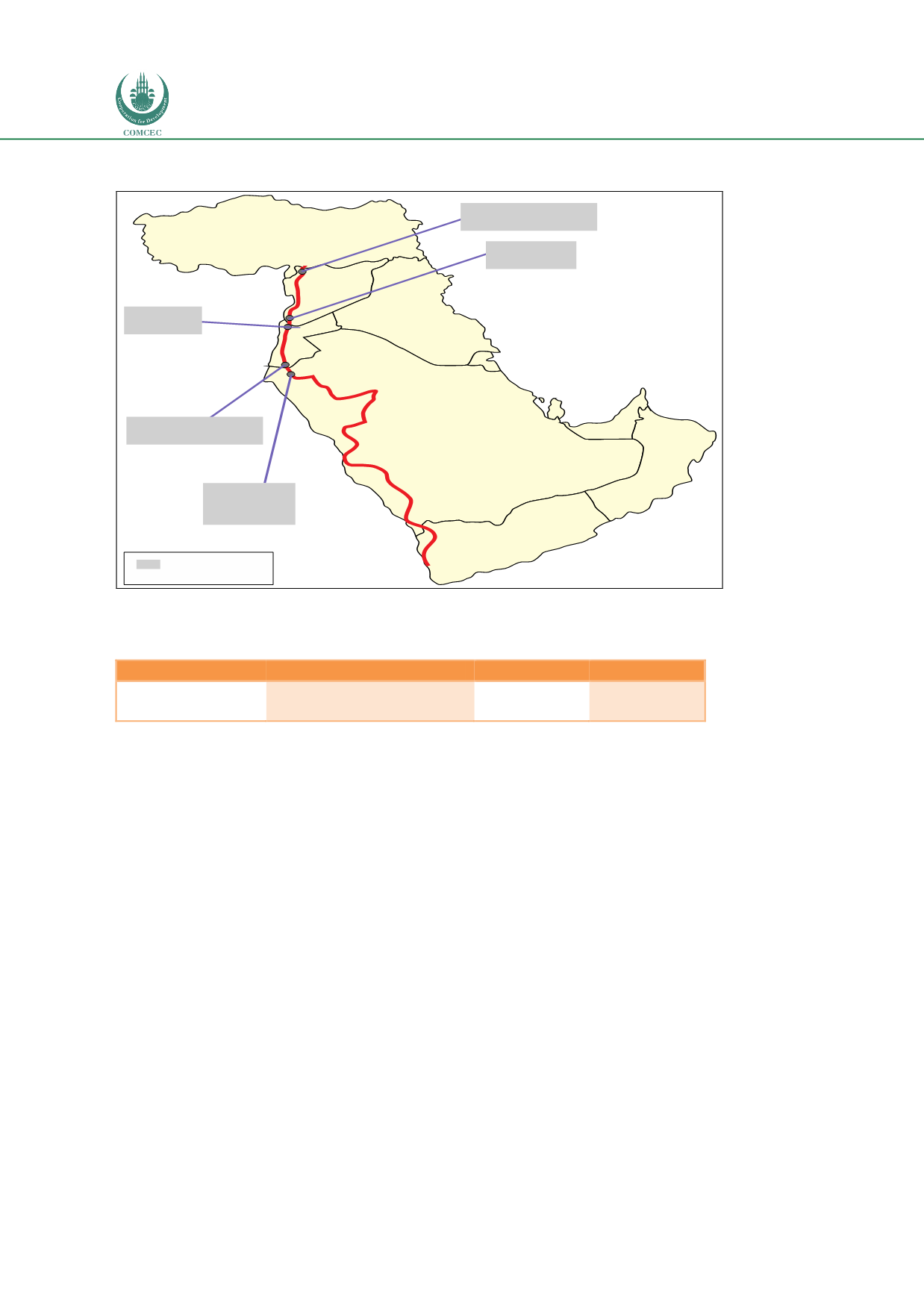

Improving Transnational Transport Corridors
In the OIC Member Countries: Concepts and Cases
168
Figure 62 Alignment for the M45 route encompassing North - South direction
Source: Fimotions (2017).
Table 61: Corridor profile Mashreq North-South Corridor M45
Location
Countries covered
Length (km)
Secretariat
Mashreq North-
South Corridor
Turkey, Syria, Jordan,
Saudi Arabia, Yemen
2,654
None
Note: Countries in bold are OIC Member Countries
4.8.2.
Political and Institutional Factors
By the time the European Common Market was created by the treaty of Rome in 1957, the
Arab League states had signed among themselves a treaty for joint defense and economic
cooperation, a convention to facilitating trade and regulating transit trade, and an Arab
Economic Unity Agreement. In addition, they had created the Arab League in 1945 as an
institution for political coordination. Ironically, though the Arab states pioneered regional
economic and political integration, the Middle East today has the least trade within itself of any
region in the world (refer to the trade analysis below). This said, the Arab economic
cooperation process also provided concrete projects, actions and regional or sub-regional
trade and road transport.
In view of this, for trade and transport facilitation, the United Nations Economic and Social
commission for Western Asia (UN-ESCWA) developed in 1999, adopted the Integrated
Transport System for the Arab Mashreq (ITSAM) as a regional transport network. This aims to
modernize the road network in the region and to build a network of railways, which connects
the Arab Mashreq with Europe and the Arab Gulf region. In this regard, a map of the major
TURKEY
JORDAN
SYRIA
IRAQ
KUWAIT
QATAR
BAHRAIN
SAUDI ARABIA
U.A.E
OMAN
YEMEN
Bab Al-Hawa
Al Mudawara
Halat
Ammar
Jaber
Nassib
: Border crossing
points
















